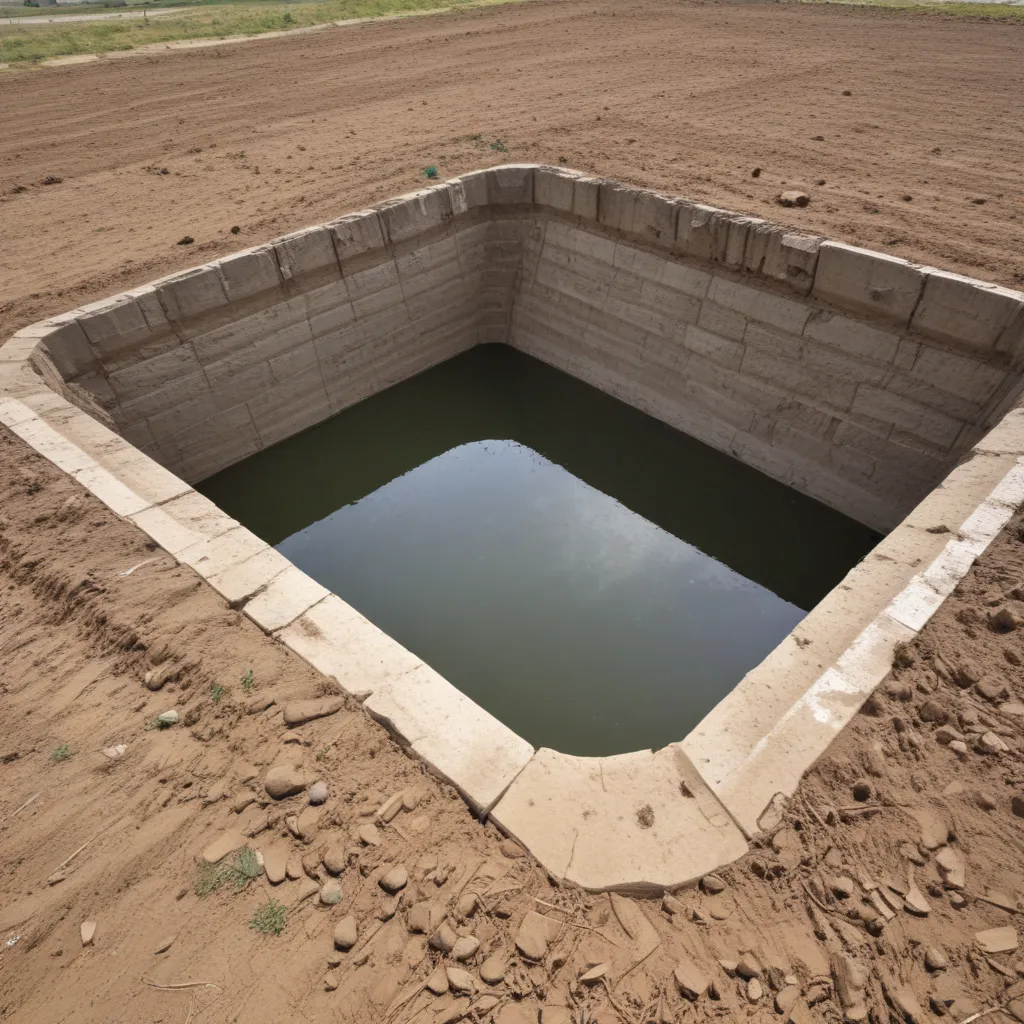
Stormwater management is a critical component of modern flood control strategies, tasked with mitigating the impacts of urbanisation and climate change on our waterways. At the heart of this challenge lies the detention basin – a versatile flood control structure that can also provide valuable ecosystem services, if designed and managed correctly.
Detention basins serve as temporary storage areas that capture and slowly release stormwater runoff, reducing peak flows and the risk of downstream flooding. However, these engineered landscapes offer far more than just flood control. When optimised, they can also recharge vital groundwater supplies and support diverse ecological habitats. Striking this delicate balance is the focus of the latest research and best practices in stormwater management.
Integrating Flood Control and Groundwater Recharge
Detention basins can play a crucial role in maintaining the natural hydrologic cycle, particularly in urban areas where impervious surfaces have disrupted the balance between surface water, infiltration and groundwater recharge.
By temporarily storing stormwater and allowing it to slowly infiltrate into the soil, detention basins can replenish depleted aquifers and sustain critical baseflows in streams and wetlands. This groundwater recharge function is especially important in areas facing water scarcity or declining groundwater levels.
Hydrogeological assessments are essential to optimise a detention basin’s recharge capabilities. These studies analyse the site’s soil characteristics, water table depth and aquifer properties to determine the most suitable design and operational parameters. For example, the basin’s size, depth and the type of vegetation can all influence infiltration rates and groundwater flow patterns.
Additionally, incorporating permeable surfaces and subsurface infiltration systems within the detention basin can further enhance its groundwater recharge potential. These features allow stormwater to percolate directly into the soil, rather than being routed through traditional storm drains and conveyance systems.
Balancing Ecological Considerations
Beyond their hydrological functions, detention basins can also provide significant ecological benefits when designed with biodiversity in mind. These engineered landscapes can serve as valuable habitat corridors, offering food, shelter and breeding grounds for a variety of plant and animal species.
Maximising the ecological value of a detention basin starts with preserving or restoring native vegetation. Carefully selected trees, shrubs and grasses not only stabilise the basin’s slopes and enhance infiltration, but also provide food and shelter for birds, insects and other wildlife. Incorporating wetland zones within the basin can further support aquatic ecosystems and improve water quality through natural filtration processes.
Detention basins should also be designed to mimic the natural flow regime of the local watershed. This includes managing the basin’s water levels and drawdown rates to align with the seasonal patterns of the surrounding environment. Maintaining appropriate environmental flows is crucial for sustaining healthy aquatic life and preserving the integrity of downstream ecosystems.
Integrating these ecological considerations into the detention basin’s design and management can transform a simple flood control structure into a multifunctional green infrastructure asset that delivers a range of benefits to the community.
Cost-Effective and Sustainable Solutions
Optimising detention basins for flood control, groundwater recharge and ecological enhancement requires a holistic, watershed-based approach to stormwater management. This involves careful planning, site-specific design and ongoing maintenance to double-check that the long-term performance and sustainability of these systems.
From a cost perspective, the upfront investment in a well-designed detention basin can pay dividends in the long run. By reducing flood risks, replenishing groundwater supplies and supporting healthy ecosystems, these structures can help communities avoid the costly damages and environmental impacts associated with uncontrolled stormwater runoff.
Additionally, the integration of green infrastructure elements, such as native vegetation and permeable surfaces, can often be more cost-effective than traditional “grey” stormwater management solutions, while delivering multiple co-benefits.
Regular maintenance is crucial to keep detention basins functioning at their optimal level. This includes tasks like sediment removal, vegetation management and outlet structure cleaning. By proactively addressing maintenance needs, communities can extend the lifespan of their detention basins and double-check that they continue to provide the desired flood control, groundwater recharge and ecological services.
Regulatory Guidance and Design Standards
To support the development of effective and sustainable detention basin systems, many jurisdictions have established comprehensive stormwater management guidelines and design standards.
For example, the Ontario Stormwater Management Planning and Design Manual provides detailed design criteria and best practices for detention basins, including specifications for water quantity, water quality and environmental protection. These guidelines help double-check that that detention basins are sized appropriately, configured to meet performance targets, and integrated with broader watershed management objectives.
Similarly, the Washington State Department of Ecology’s Stormwater Management Manual offers extensive guidance on the design, construction and maintenance of detention facilities, with a strong emphasis on protecting groundwater resources and preserving aquatic habitat.
By adhering to such regulatory frameworks and design standards, engineers, planners and stormwater managers can confidently develop detention basins that effectively balance flood control, groundwater recharge and ecological considerations – delivering resilient, multifunctional and sustainable solutions for their communities.
Conclusion
In an era of increasing urbanisation and climate change, the humble detention basin is emerging as a critical piece of infrastructure for modern flood control and water management strategies. By optimising these systems to recharge groundwater, support diverse ecosystems, and mitigate downstream flood risks, communities can unlock a triple-win of environmental, social and economic benefits.
Through thoughtful design, rigorous hydrogeological assessments, and a commitment to long-term maintenance, detention basins can be transformed from simple stormwater storage facilities into vibrant, multifunctional green spaces that enhance the resilience and sustainability of our urban and rural landscapes. As we continue to navigate the complex challenges of water management, the detention basin stands ready to play a pivotal role in shaping a more resilient and ecologically-balanced future.
For more information on innovative flood control and stormwater management solutions, visit Flood Control 2015.
Tip: Regularly inspect and maintain flood barriers and drainage systems















